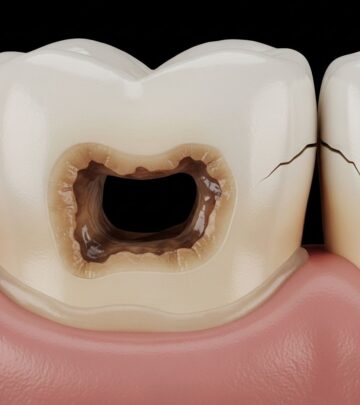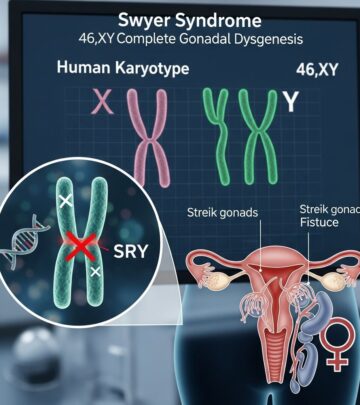Abortion Procedures: Methods, Risks, Recovery, and Considerations
Comprehensive overview of abortion procedures, risks, aftercare, and decision-making considerations for women seeking information.

Abortion – Procedure Overview
Abortion is a medical procedure that ends an unwanted pregnancy by removing the fetus and placenta from the uterus. Abortion may be performed for multiple reasons, including health risks to the mother, fetal abnormalities, or social and personal circumstances. Understanding the available methods, their risks, and recovery protocols is essential for anyone considering this procedure.
What is Abortion?
An abortion results in the termination of a pregnancy. It can be either induced (deliberately performed) or spontaneous (also called miscarriage). This guide focuses on induced abortion performed through medical or surgical means.
- Medical abortion: Uses medications to end a pregnancy.
- Surgical abortion: Uses procedures to physically remove pregnancy tissue.
Purposes of Abortion
Women may seek abortion due to:
- Unwanted or unplanned pregnancy
- Health risks to the mother
- Fetal anomalies incompatible with life
- Threats to physical or mental health
Types of Abortion Procedures
The most common abortion methods are categorized as medical (medication induced) and surgical, with the choice depending on gestational age, health considerations, and personal preference.
Medical Abortion
This method is primarily used during the first 10 weeks of pregnancy. Medical abortion involves taking specific medications to end the pregnancy:
- Mifepristone: Blocks the hormone progesterone, preventing the pregnancy from progressing.
- Misoprostol: Used 24-48 hours after mifepristone, triggering the uterus to contract and expel pregnancy tissue.
These medications may be taken orally or placed in the vagina, depending on provider instructions. Medical abortion does not require surgery and can often occur at home, but requires close adherence to provider instructions.
| Gestational Age (Weeks) | Preferred Medical Abortion Method |
|---|---|
| Up to 10 | Mifepristone + Misoprostol |
Possible Side Effects
- Heavy vaginal bleeding or spotting
- Cramps and abdominal pain
- Nausea and vomiting
- Diarrhea
- Fever and chills
Surgical Abortion
Surgical abortion involves the physical removal of pregnancy tissue from the uterus, performed at a healthcare facility. Methods vary depending on the stage of pregnancy:
- Aspiration (Suction Curettage): Mainly used during the first trimester. A thin tube (cannula) attached to suction removes the uterine contents.
- Dilation and Curettage (D&C): The cervix is dilated and a curette is used to scrape the uterine lining. Sometimes combined with suction.
- Dilation and Evacuation (D&E): Typically used for pregnancies beyond the first trimester (up to about 24 weeks). Cervical dilation with removal of tissue using suction and surgical instruments.
| Gestational Age (Weeks) | Preferred Surgical Method |
|---|---|
| Up to 13 | Aspiration or D&C |
| 13–24 | D&E |
Possible Side Effects
- Bleeding and cramping
- Risk of uterine perforation
- Infection risk
- Emotional distress
Late-Term Abortion
Abortions performed after the second trimester are infrequent and subject to strict legal and ethical regulations. These usually require hospitalization and more complex surgical procedures. Legitimate grounds for late-term abortions often include severe fetal conditions or serious threats to maternal health.
Considerations Before Abortion
Choosing abortion is a significant decision involving medical, emotional, legal, and ethical considerations. Critical questions and factors to discuss with a healthcare provider include:
- Gestational age (determines procedure suitability)
- Underlying health conditions
- Potential risks and complications
- Legal status in your region
- Access to aftercare support
- Emotional and psychological impact
Some women experience emotional distress post-abortion. Support groups and counseling may be helpful.
Abortion Procedure Risks and Side Effects
Both medical and surgical abortion procedures carry risks and side effects. Providers offer guidance on recognizing and responding to complications.
Common Side Effects
- Bleeding and cramping
- Nausea or vomiting
- Headache
- Fever or chills
- Emotional reactions: sadness, relief, or distress
Serious Risks—When to Seek Medical Help
- Excessive bleeding (soaking over two full-size pads per hour for two+ hours)
- Signs of infection (fever that does not resolve, foul-smelling vaginal discharge, persistent pain)
- Incomplete abortion (if pregnancy tissue remains, may need surgical intervention)
- Allergic reaction to medications
- Severe abdominal pain
- Dizziness, lightheadedness, or fainting
- Pain/swelling in legs (risk of blood clots)
Complications such as uterine perforation, pelvic inflammatory disease, and Asherman syndrome (scar tissue in uterus) are rare but more likely following surgical procedures.
Aftercare Following Abortion
After an abortion, proper aftercare promotes safe recovery. Healthcare providers supply instructions specific to the performed procedure, but common recommendations include:
- Rest for at least 24 hours after the procedure
- Monitor for signs of infection or excessive bleeding
- Use pads (not tampons) for vaginal bleeding
- Avoid sexual intercourse and inserting objects in the vagina for 2 weeks
- Take prescribed medications as directed
- Schedule a follow-up appointment if advised
If complications occur, contact your provider promptly. Emotional support may also be necessary for many women—resources are available through clinics and organizations.
Legal and Ethical Considerations
The accessibility and legality of abortion continue to be debated worldwide and are subject to local laws and regulations. As of 2022, the Supreme Court’s Dobbs v. Jackson Women’s Health Organization decision overturned Roe v. Wade, dramatically affecting abortion access in the United States. The legal status varies by state, with some regions imposing restrictions while others maintain broader access.
- Medical abortion remains accessible in some areas via telehealth and mail-order services, but ongoing legal challenges create uncertainty.
- The use of mifepristone and misoprostol is tightly regulated; check local guidelines for availability.
- Late-term abortions are rare and strictly controlled.
Emotional Reactions and Support
Women may experience varied emotional responses following abortion—ranging from relief to sadness, and sometimes grief. Support networks can be crucial for recovery. Consider:
- Telling trusted friends or family
- Contacting mental health counselors or support groups
- Discussing emotions with your provider
Some individuals may encounter stigma or encounter challenges related to intimate partner violence, privacy concerns, or family dynamics.
Alternatives to Abortion
- Carrying pregnancy to term: Parenting or adoption options
- Seeking counseling: Counseling can help clarify your decision and feelings
- Support services: Local clinics or organizations may offer counseling and assistance for all options
Frequently Asked Questions (FAQ)
Q: How do I decide which abortion method is right for me?
A: Your provider will help you choose based on your gestational age, medical history, and preferences. Medical abortion is generally used up to 10 weeks; later pregnancies may require surgical methods.
Q: What are the signs I should contact my doctor after an abortion?
A: Call your provider if you experience excessive bleeding (changing pads more than once hourly), severe pain, fever, foul-smelling discharge, leg swelling or pain, shortness of breath, or persistent pregnancy symptoms.
Q: Can abortion affect future fertility?
A: Most abortions do not impact fertility. Rarely, surgical abortion may cause scarring inside the uterus (Asherman syndrome) which can affect future pregnancies.
Q: Will I experience emotional distress?
A: Emotional reactions vary—many feel relief, but others may experience sadness, guilt, or anxiety. Counseling and support resources are available.
Q: Is abortion legal in all states?
A: Abortion laws vary widely across the United States; check current local regulations and consult with licensed providers for up-to-date guidance.
Resources for Additional Support
- Licensed healthcare providers
- The American College of Obstetricians and Gynecologists (ACOG)
- Women’s health clinics
- Mental health counselors
- Support organizations for reproductive health
References & Further Reading
- Comprehensive Gynecology, 8th Edition, Elsevier
- Clinical Obstetrics and Gynaecology, 5th Edition, Elsevier
- MedlinePlus Medical Encyclopedia
References
- https://houstonlawreview.org/article/129434
- https://morningstarclinics.com/different-types-of-abortion-procedures-risks-and-side-effects/
- https://journals.sagepub.com/doi/abs/10.1177/0886260517734861
- https://medlineplus.gov/ency/patientinstructions/000658.htm
- https://medlineplus.gov/ency/article/002912.htm
- https://medlineplus.gov/abortion.html
- https://en.wikipedia.org/wiki/Late_termination_of_pregnancy
- https://connect.medlineplus.gov/application?mainSearchCriteria.v.cs=2.16.840.1.113883.6.103&mainSearchCriteria.v.c=639
- https://pllwomensresourcecenter.com/considering-an-abortion/
Read full bio of Sneha Tete












